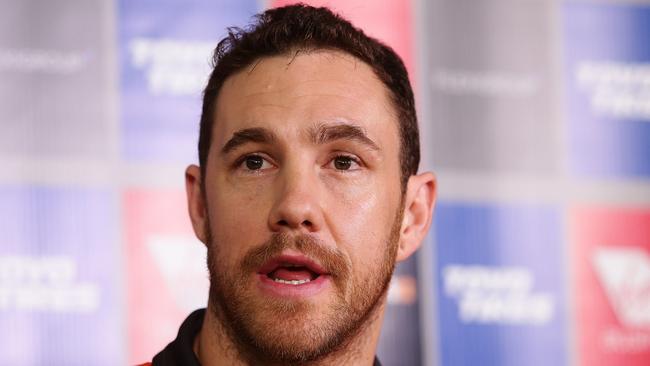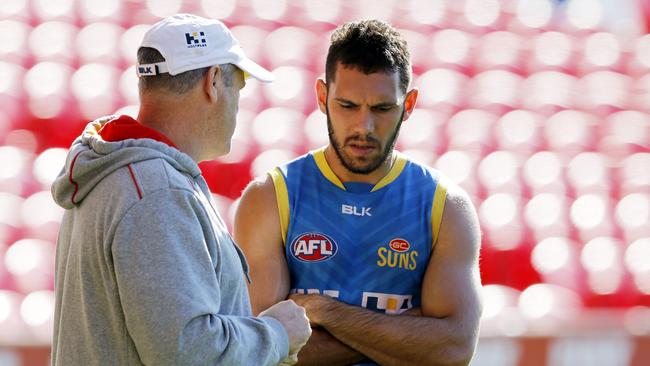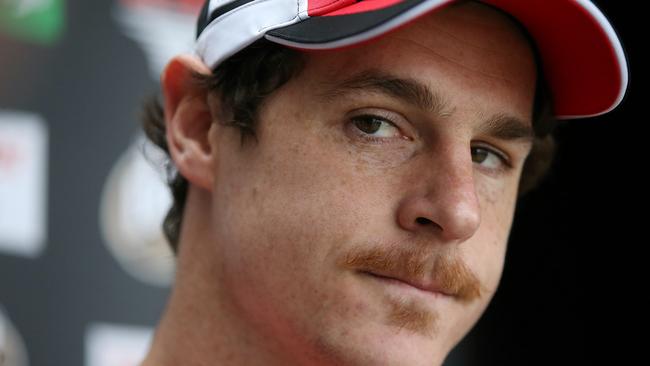AFL no longer releases reports on drug testing, but video of players misbehaving with “white powder” highlights the illicit drug problem
NO longer does the AFL issue an annual report on its illicit drug testing. But the release of “white powder” videos of star players keeps the drug debate on the game’s public agenda

Sport
Don't miss out on the headlines from Sport. Followed categories will be added to My News.
- Gill dodges media amid Mumford drug scandal
- Mumford ‘not in a good place’ after drug video release
- Mumford set for rehab after shock drug video
HERE we go again — AFL players and illicit drugs.
Former Greater Western Sydney ruckman Shane Mumford is under investigation by the AFL integrity unit after the release of a video showing him snorting a white powder.
The Giants — who are considering relisting Mumford as a player — say the vision is from 2015.
That was a big year for the drug debate in AFL circles.
In November 2015, Essendon’s traded defender Jake Carlisle was banned for two games — the first two of Season 2016 — by his new AFL employers at St Kilda after a video showing his snorting white powder while on holiday in the US was shown on Australian television.
In October 2015, the AFL had sought to be seen as tougher against illicit drugs by reducing the three-strike policy to two.

In August 2015, Gold Coast was hit with allegations one of its stars, Harley Bennell (now at Fremantle), as photographs emerged of “a wild night in Launceston” two years earlier with Bennell preparing to snort five lines of white powder.
Mark Evans, now the Gold Coast chief executive, was in charge of the AFL’s football division in 2015. His script could easily be re-read by new AFL football boss Steve Hocking: “Drug use in society, and that includes AFL footballers, is an incredibly complex issue. There is no silver bullet that just makes this go away.”
And it is not going away — either in public or in professional sports such as the AFL.
The AFL — and the players’ union (AFLPA) — has for a long time preferred to counsel rather than confront the players on illicit drugs. Two strikes, rehabilitation, education … but no heavy hand, unless there are performance-enhancing drugs.
Certainly the union takes issue with isolated incidents — such as Mumford, Carlisle and Bennell — casting a shadow against the bulk of the AFL players who get through more than a thousand drug tests each year with no strike.
But public tolerance of AFL players falling into the drug mire is not high.
“How dumb are these blokes?” “Is this how role models should behave?” “When is the AFL going to get tough on drugs?”
And no longer can any independent judge tell the public whether all the AFL and AFLPA work in counselling and testing the 800-plus players is changing the rather disturbing images left by the Mumford, Carlisle and Bennell moments across 2013-2015.
Part of the new deal struck by the players and league in 2015 — pulling down the three strikes to two — was to stop the annual release of an AFL report detailing how many drug tests were conducted each year — and how many positive results came from these tests.

The last published figures refer to Season 2013 — 1998 tests, 15 fails and four players on two strikes. Whatever silence the AFL and AFLPA expected in shutting down the public commentary from the league’s once-annual drug report is quickly shattered by moments such as the Mumford video.
The AFL — and the players union — will remind all again that the tale of drug use among AFL players is “substantially lower compared with the same age group (18-30) of young men in the wider community.”
But clearly the public expectation is substantially higher with “role models”.
Originally published as AFL no longer releases reports on drug testing, but video of players misbehaving with “white powder” highlights the illicit drug problem
